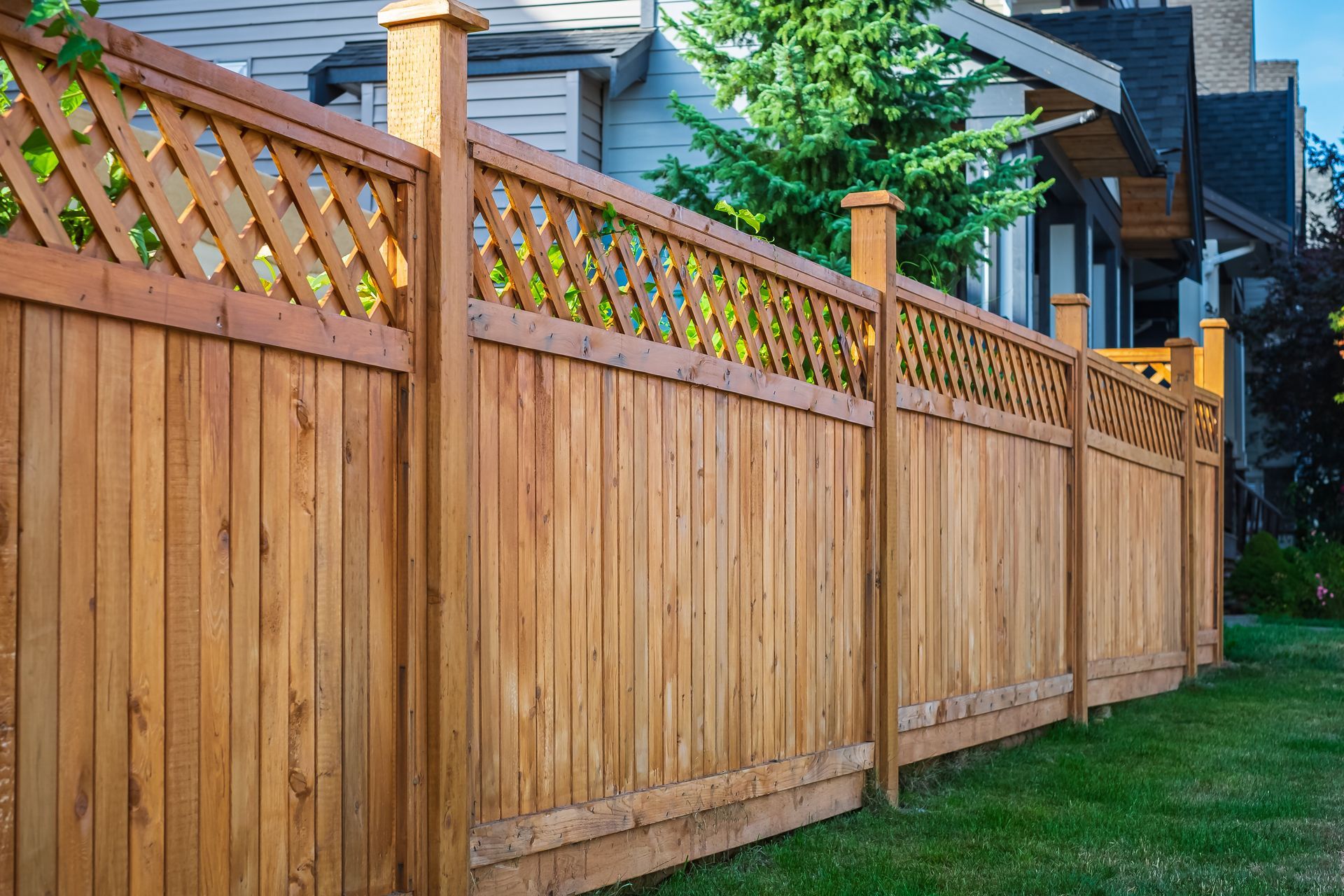Blog
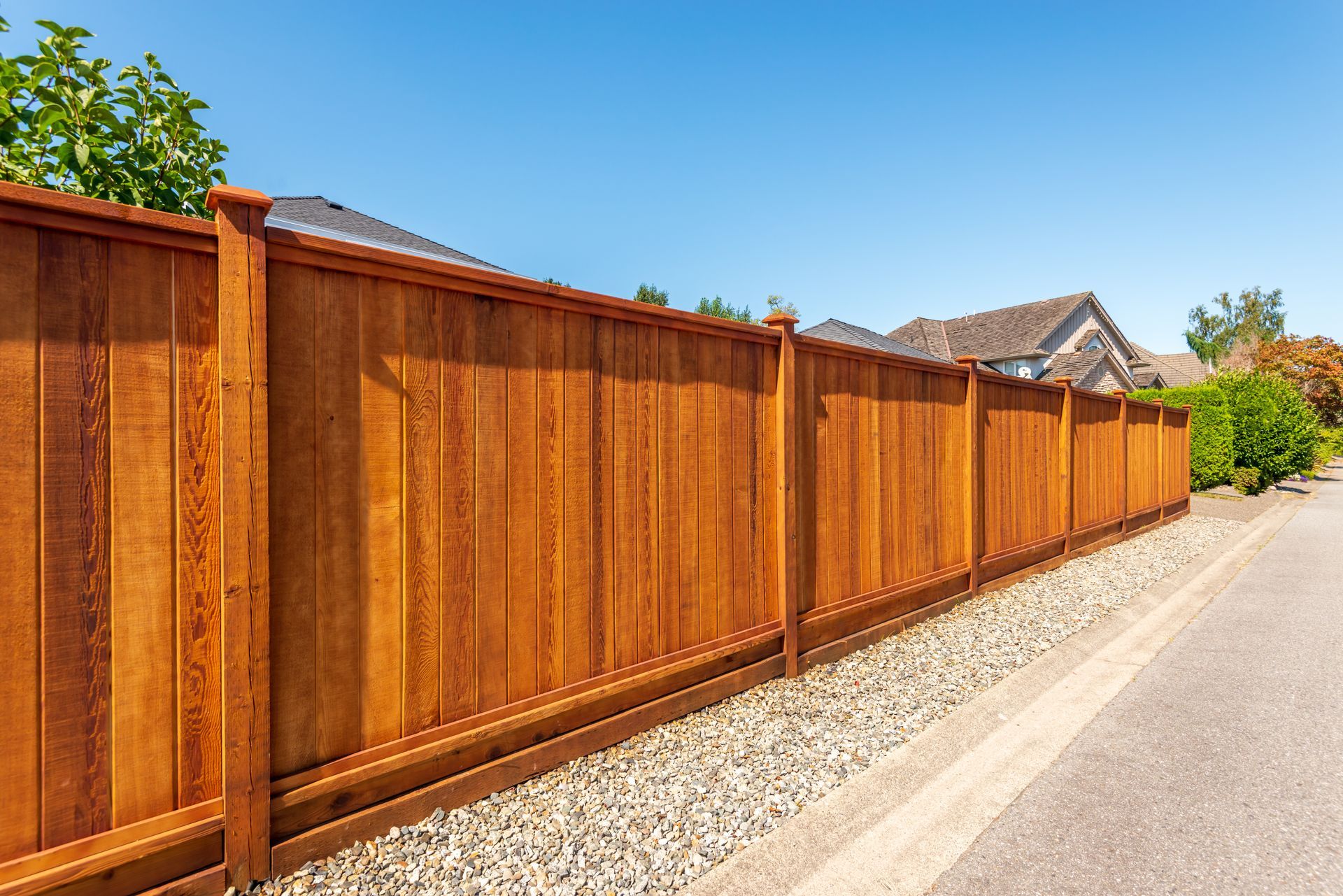
A fence does more than just mark property lines or provide privacy—it’s an essential design element that can enhance the look and feel of your home. Choosing the right fence involves balancing functionality with style to complement your home’s aesthetic. If you’re considering a new fence , here are some tips to help you select one that aligns seamlessly with your property in London, Ontario. 1. Consider Your Home's Architectural Style Your home’s design sets the tone for the type of fence that will work best. For example: Traditional Homes: Ornamental wrought iron or white picket fences can highlight the classic charm of Victorian or Colonial-style homes. Modern Homes: Sleek materials like horizontal wood slats, metal panels, or composite fencing work well with minimalist designs. Cottage-Style Homes: Lattice or rustic wood fences can enhance a quaint and cozy feel. 2. Match the Color Palette The color of your fence should complement your home’s exterior. If your home has neutral tones, a natural wood stain or soft-colored vinyl fence can blend beautifully. Bold-colored homes may benefit from fences in darker hues, like black or deep brown, to create a striking contrast. 3. Focus on Material Compatibility Different fencing materials evoke different aesthetics. Choose one that harmonizes with your home’s exterior finishes: Wood: Offers a warm, natural look that suits traditional and rustic homes. Metal: Adds a contemporary or industrial feel, ideal for modern homes. Vinyl: Versatile and low-maintenance, it works for both classic and contemporary styles. Stone or Brick Accents: These can add texture and luxury to your fence design, especially for upscale properties. 4. Think About Your Landscape Design A fence should complement not only your home but also your landscaping. For instance: A minimalist fence pairs well with clean, manicured gardens. Ornate fences enhance lush, floral landscapes. Privacy fences can act as a backdrop for climbing plants or vertical gardens. 5. Determine the Purpose of Your Fence The function of your fence can guide its design: Privacy Fences: Tall and solid, ideal for modern or suburban homes. Decorative Fences: Shorter, with intricate details, to enhance curb appeal. Security Fences: Metal or composite fences can provide durability without sacrificing aesthetics. 6. Look at Neighborhood Trends London, Ontario, has a mix of architectural styles, from historic homes to new builds. Take a walk around your neighborhood to get inspiration. A fence that complements your neighbors’ without being identical helps maintain cohesion while standing out. 7. Work with Professionals Custom fence designs can perfectly suit your home’s aesthetic and functional needs. At Deck and Fence London, we specialize in creating fences that enhance your property’s charm and functionality. We’ll work with you to choose the materials, design, and finishes that align with your vision. Conclusion A well-chosen fence can elevate your home’s aesthetic and boost its curb appeal. By considering architectural style, materials, and landscaping, you can select a fence that ties together your property’s design elements. If you’re ready to enhance your outdoor space, contact Deck and Fence London for expert advice and installation services. Transform your home with the perfect fence—call us today!
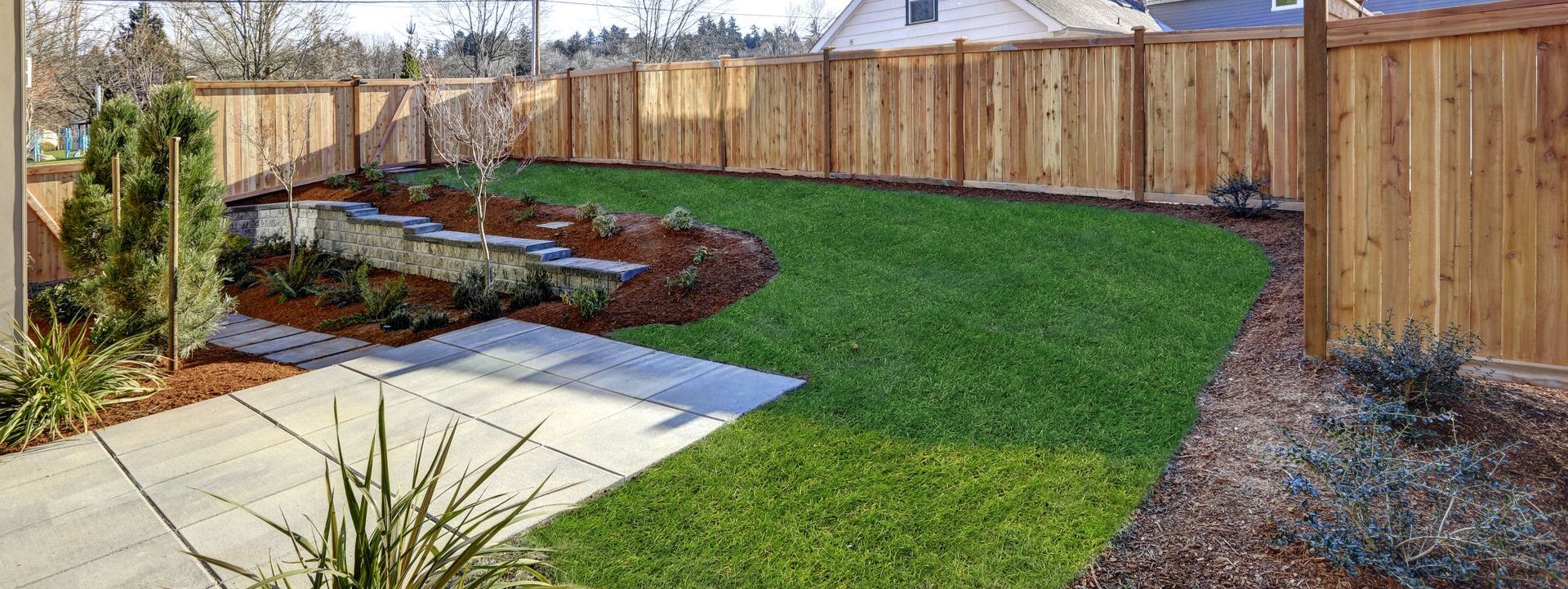
Modern landscape design is all about creating a harmonious blend of functionality and aesthetics. Fences, often viewed as purely utilitarian, can play a pivotal role in elevating your outdoor space. Whether you're aiming for a minimalist look or a more elaborate contemporary style, here’s how you can incorporate a fence into your modern landscape design. 1. Choose the Right Materials The materials of your fence will largely define its modern appeal. Wood: Opt for clean, horizontal slats made from cedar or pine, which can be stained or left natural for a sleek finish. Metal: Powder-coated aluminum or steel offers durability and a polished, modern aesthetic. Composite: A sustainable and low-maintenance option that mimics the look of wood without the upkeep. Glass Panels: Perfect for maintaining views while providing a chic, open feel. 2. Embrace Simplicity Modern design thrives on simplicity. Stick to clean lines and geometric patterns. Avoid ornate details or overly complex designs that detract from the streamlined aesthetic. A simple fence with uniform panels or slats can make a bold statement. 3. Integrate Colors That Complement Your Landscape The color of your fence should harmonize with your surroundings: Neutral Tones: Shades like gray, black, and white blend seamlessly into modern landscapes. Natural Finishes: Wood stains that highlight natural grains can add warmth and texture. Bold Accents: For a more daring approach, consider a single accent color that ties in with your outdoor furniture or garden décor. 4. Incorporate Functionality Modern landscapes prioritize multi-functional elements. Built-In Seating: Add bench seating to your fence for a cozy gathering area. Planter Boxes: Attach planter boxes to the fence for vertical gardens or herbs. Lighting: Integrate LED strip lights or solar-powered fixtures for ambiance and security. 5. Create Visual Flow A modern fence should enhance the flow of your outdoor space: Horizontal Lines: Extend the horizontal slats of your fence into other elements like garden borders or retaining walls for cohesion. Open Spaces: Use fences with gaps or transparent materials to create an open, airy feel. Layering: Pair your fence with layers of greenery, such as shrubs or ornamental grasses, to soften its impact and add depth. 6. Enhance Privacy Without Isolation Privacy is a key consideration, especially in urban areas. For a modern touch: Partial Screens: Combine solid panels with open sections to maintain privacy without feeling enclosed. Green Screens: Train climbing plants like ivy or jasmine along your fence for a living privacy wall. 7. Consider Sustainability Modern homeowners value eco-friendly options. Choose sustainable materials like bamboo, reclaimed wood, or composite for your fence. Additionally, consider locally sourced materials to reduce your carbon footprint. 8. Match Your Fence to Your Home’s Architecture A cohesive design ensures that your fence complements your home. If your home has sharp, angular lines, opt for a fence with geometric patterns. For curved or flowing architectural elements, consider soft, rounded edges in your fence design. Conclusion Incorporating a fence into a modern landscape design requires thoughtful planning and a focus on blending aesthetics with functionality. With the right materials, design, and placement, your fence can enhance your outdoor space, providing privacy, security, and visual appeal. At Deck and Fence London , we specialize in creating fences that are not just barriers but design elements. Contact us today to discuss how we can help you transform your yard with a modern, stylish fence that perfectly fits your landscape vision. Contact Deck and Fence London: Your partner for all your fencing and decking needs in London, Ontario!

Your deck is more than just an outdoor space—it’s an extension of your home, perfect for relaxing, entertaining, and enjoying the great outdoors. Whether you're hosting summer barbecues, having a quiet evening under the stars, or simply enjoying a morning coffee, a well-equipped deck can elevate your outdoor experience. At Deck and Fence London , we know how important it is to create a functional and stylish outdoor living area. That's why we've put together this guide to help you upgrade your deck with must-have accessories. 1. Outdoor Lighting for Ambiance and Safety Why It's a Must-Have: Adding lighting to your deck can transform it into a cozy and inviting space, allowing you to enjoy your outdoor area well after the sun goes down. It also improves safety by illuminating pathways, stairs, and edges. Top Lighting Options: String Lights : Perfect for creating a warm, festive ambiance. Solar Deck Lights : Eco-friendly and easy to install along the deck perimeter or stairs. Recessed Deck Lighting : Installed directly into the deck surface for a sleek, modern look. Lanterns and Sconces : Add charm and personality to your deck with stylish fixtures. Pro Tip: Choose LED lights for energy efficiency and long-lasting performance. Opt for dimmable options to adjust the mood as needed. 2. Comfortable and Stylish Outdoor Furniture Why It's a Must-Have: Comfortable seating turns your deck into a true outdoor living room. Invest in durable, weather-resistant furniture to maximize the comfort and functionality of your deck. Top Furniture Ideas: Sectional Sofas : Ideal for larger decks, providing ample seating for guests. Outdoor Dining Sets : Perfect for al fresco dining and summer gatherings. Lounge Chairs and Hammocks : Great for relaxing and soaking up the sun. Outdoor Rugs : Add color, texture, and a cozy feel to your deck floor. Pro Tip: Look for furniture made of materials like teak, aluminum, or resin wicker, which can withstand the elements in London, Ontario. 3. Deck Rail Planters and Greenery Why It's a Must-Have: Bring life and color to your deck with plants. Deck rail planters and vertical gardens not only enhance the aesthetic but can also provide privacy and a touch of nature. Top Plant Ideas: Herb Gardens : Grow fresh herbs like basil, rosemary, and mint right on your deck. Flowering Plants : Add vibrant color with petunias, geraniums, and marigolds. Privacy Screens : Use tall plants like bamboo or ornamental grasses to create a natural barrier. Succulents and Cacti : Low-maintenance options that thrive in sunny spots. Pro Tip: Choose a mix of perennials and annuals for a deck garden that blooms all season long. Consider self-watering planters to reduce maintenance. 4. Shade Solutions for Comfort Why It's a Must-Have: Protect yourself and your guests from the harsh sun with shade solutions that also add style to your deck. Top Shade Options: Retractable Awnings : Adjustable shade that extends or retracts as needed. Pergolas : Create a semi-covered area with a pergola, perfect for growing climbing plants. Umbrellas : A versatile and budget-friendly option for adding shade where you need it. Shade Sails : Modern and customizable, offering a unique look while blocking the sun. Pro Tip: Consider using UV-resistant fabrics to maximize protection and durability. Opt for neutral tones that blend seamlessly with your deck's design. 5. Built-In Deck Features Why It's a Must-Have: Incorporate built-in features to maximize the utility and aesthetic of your deck. These elements can increase the value of your home while enhancing your outdoor living experience. Top Built-In Ideas: Bench Seating : Provides extra seating without taking up space. Fire Pits : Create a cozy gathering spot for chilly evenings. Outdoor Kitchens : For the ultimate entertainer, include a built-in grill, sink, and countertop. Storage Solutions : Built-in storage benches or cabinets to keep your deck clutter-free. Pro Tip: When adding built-ins, use materials that match or complement your deck's existing design for a cohesive look. 6. Weatherproof Deck Covers and Curtains Why It's a Must-Have: Deck covers and outdoor curtains provide privacy, protect your deck from the elements, and create a cozy, sheltered space. Top Cover Ideas: Gazebos and Canopies : Provide full coverage for a portion of your deck. Outdoor Curtains : Add a touch of elegance while blocking wind and creating privacy. Clear Vinyl Panels : Perfect for keeping the rain out while preserving the view. Pro Tip: Opt for fade-resistant and water-repellent fabrics to ensure longevity. Consider retractable options for flexibility. 7. Heating and Cooling Solutions Why It's a Must-Have: Extend the use of your deck year-round by adding heating and cooling features. Whether it's a chilly autumn evening or a hot summer day, these solutions ensure comfort in any season. Top Climate Control Options: Patio Heaters : Gas or electric heaters to keep the chill away. Misting Systems : Perfect for cooling down your deck during hot summer months. Ceiling Fans : Circulate air and keep insects at bay. Pro Tip: Invest in portable options so you can easily adjust your setup based on weather conditions and where your guests are seated. 8. Entertainment Additions Why It's a Must-Have: Make your deck the ultimate entertainment space by adding features that will impress your guests and elevate your gatherings. Top Entertainment Ideas: Outdoor Speakers : Set the mood with weatherproof sound systems. Projector and Screen : Create an outdoor movie night experience. Hot Tubs and Spas : Add a touch of luxury and relaxation. Game Tables : Consider adding a ping-pong or foosball table for fun family activities. Pro Tip: Ensure all electronic devices are rated for outdoor use to withstand rain and humidity. Final Thoughts Upgrading your deck with these must-have accessories can transform it into a luxurious and functional outdoor living space. Whether you're looking to enhance comfort, increase safety, or simply boost the aesthetic appeal of your deck, these additions are sure to make a difference. At Deck and Fence London , we specialize in creating custom decks and outdoor spaces that match your lifestyle. Whether you're looking to renovate your existing deck or build a new one from scratch, our team is here to help. Contact us today to schedule a consultation and take the first step toward creating the perfect outdoor oasis in London, Ontario. Ready to Upgrade Your Deck? Call Deck and Fence London to explore your options for enhancing your outdoor space. Let us help you bring your dream deck to life!
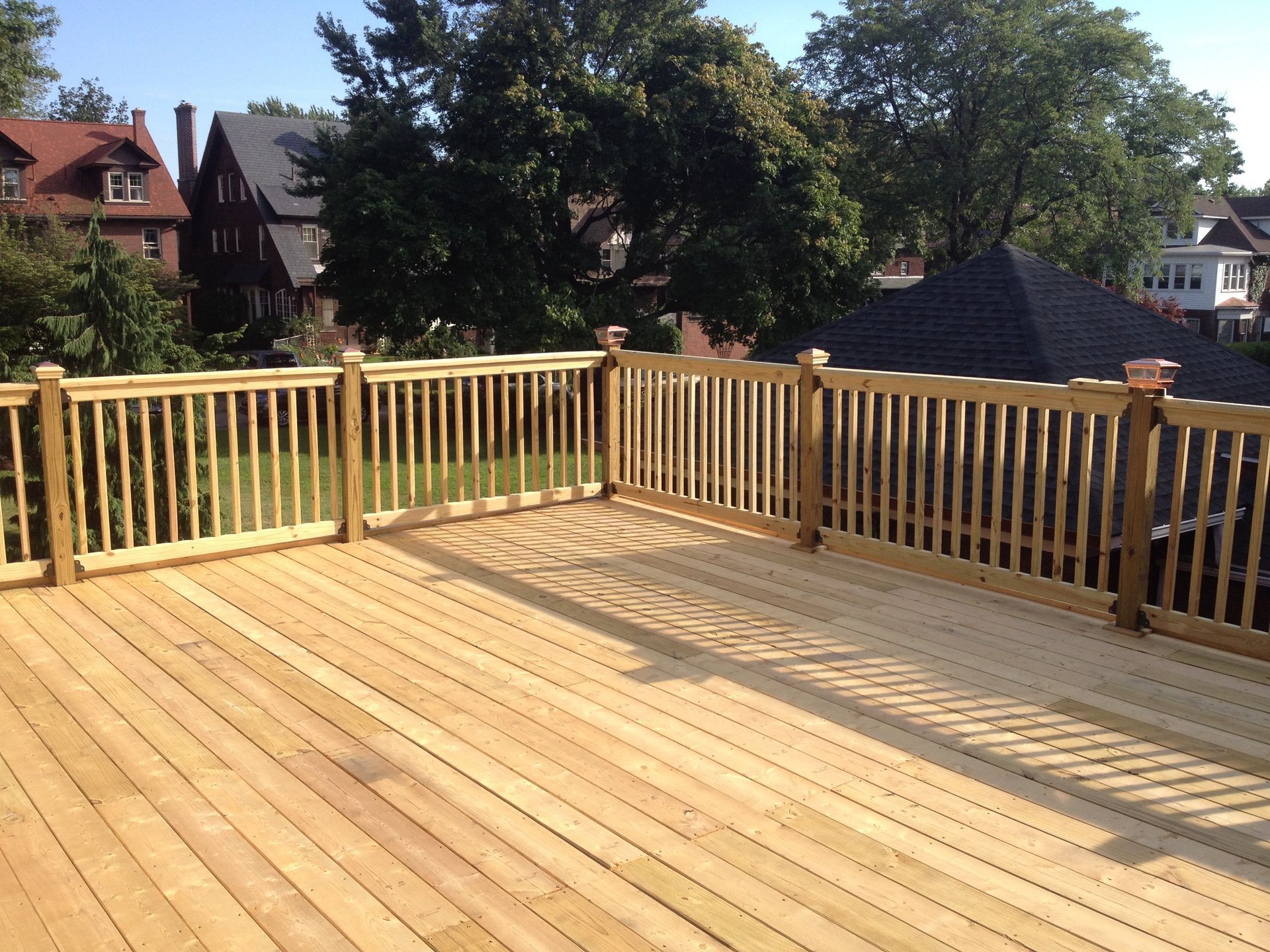
Your deck is an extension of your home—a place for family gatherings, barbecues, and enjoying the great outdoors. However, if you have young children or pets, your deck can also pose potential hazards. At Deck and Fence London , we understand that keeping your loved ones safe is a top priority. That’s why we’ve put together this guide on how to childproof and pet-proof your deck , ensuring it’s a safe space for everyone to enjoy. 1. Secure Your Deck Railings Deck railings are one of the most crucial safety features, but they can also be a source of danger if not properly secured. Here’s how to make your deck railings safer: Check for Stability: Ensure all railings are tightly secured and do not wobble. Loose railings can be dangerous for both kids and pets. Proper Spacing: Railings should be spaced no more than 4 inches apart to prevent small children and pets from squeezing through. This is especially important if your deck is elevated. Install a Railing Guard: For added safety, consider installing a clear acrylic or mesh railing guard. This helps prevent little hands, feet, and paws from getting stuck between railings while maintaining visibility. 2. Add a Gate to Your Deck A deck gate is an excellent way to keep children and pets safe, especially if your deck has stairs or is connected to a pool area. Choose a Sturdy Gate: Opt for a gate made from durable materials like metal or heavy-duty plastic. Ensure it has a secure latch that cannot be easily opened by toddlers or pets. Self-Closing and Self-Latching Mechanisms: Consider installing a gate with self-closing and self-latching features to prevent it from accidentally being left open. Check the Height: The gate should be tall enough to prevent pets from jumping over and children from climbing it. 3. Use Non-Toxic Deck Materials Kids and pets love to explore with their hands and mouths, so it’s essential to use safe, non-toxic materials on your deck. Avoid Harmful Chemicals: If you’re sealing or staining your deck, choose products that are labeled as non-toxic and eco-friendly. These are less likely to harm your pets or children if they come into contact with the surface. Opt for Slip-Resistant Surfaces: To prevent slips and falls, especially during rainy or snowy weather, use slip-resistant paint or sealant on your deck. 4. Cover Openings and Gaps Decks often have gaps between the boards or around the perimeter that can trap little fingers, paws, or even toys. Fill in Large Gaps: If the gaps between your deck boards are wide enough for small feet or paws to get stuck, consider filling them with an outdoor-friendly caulk or using a deck board repair kit. Install Skirting: Deck skirting not only enhances the look of your deck but also prevents pets and children from crawling underneath, where they might encounter hazards like insects or sharp objects. 5. Secure Furniture and Decorations Deck furniture can become a safety hazard if not properly secured, especially in windy conditions or when children and pets are playing. Anchor Heavy Furniture: Use furniture anchors or non-slip pads to secure tables, chairs, and planters. This prevents them from tipping over during rough play or strong winds. Avoid Sharp Edges: Choose furniture with rounded edges and avoid decorations with sharp corners or glass elements that can break. Store Away Small Items: Remove small items like decor pieces or garden tools from the deck when not in use to prevent choking hazards. 6. Create a Shaded Area Direct sunlight can heat up your deck and make it uncomfortable for both kids and pets. Additionally, prolonged exposure to the sun can lead to sunburn. Install a Canopy or Umbrella: Adding a shaded area using a deck canopy, pergola, or large umbrella can provide a cool retreat. Use Heat-Resistant Decking: Consider using composite decking that stays cooler in the sun, making it safer for bare feet and paws. 7. Add Safety Features for Nighttime Use If you enjoy using your deck in the evenings, proper lighting is essential for safety. Install Deck Lighting: Use solar-powered deck lights, string lights, or LED fixtures to illuminate the area. This helps prevent trips and falls, especially around stairs. Motion Sensor Lights: Adding motion sensor lights can deter wildlife from entering your deck area and alert you to any movement. 8. Mind the Plants If you have a green thumb, make sure the plants on your deck are safe for children and pets. Avoid Toxic Plants: Some popular plants, like lilies, azaleas, and certain types of ivy, can be toxic if ingested. Choose pet-friendly and child-safe plants instead. Use Heavy Planters: Opt for sturdy, heavy planters that won’t tip over easily if bumped by kids or pets. 9. Regular Maintenance and Inspection Lastly, regular deck maintenance is key to ensuring it remains a safe space for everyone. Inspect for Wear and Tear: Check your deck periodically for loose boards, protruding nails, and signs of rot or decay. Clean Regularly: Keep your deck clean of debris, leaves, and snow to prevent slips and falls. Power wash and reseal your deck as needed to maintain its durability. Check for Pests: Be on the lookout for signs of wood-boring insects like termites, which can compromise the safety of your deck. Conclusion Your deck is a place of relaxation and fun, but safety should always come first. By following these childproofing and pet-proofing tips, you can create a secure outdoor environment for your family to enjoy year-round. At Deck and Fence London , we’re here to help you build, maintain, and improve your deck to ensure it’s both beautiful and safe. If you’re looking for professional deck installation or repair services in London, Ontario, contact us today to get started on your deck project. Feel free to reach out to Deck and Fence London for all your deck needs, and let us help you create a safe, stylish, and functional outdoor space for your family!
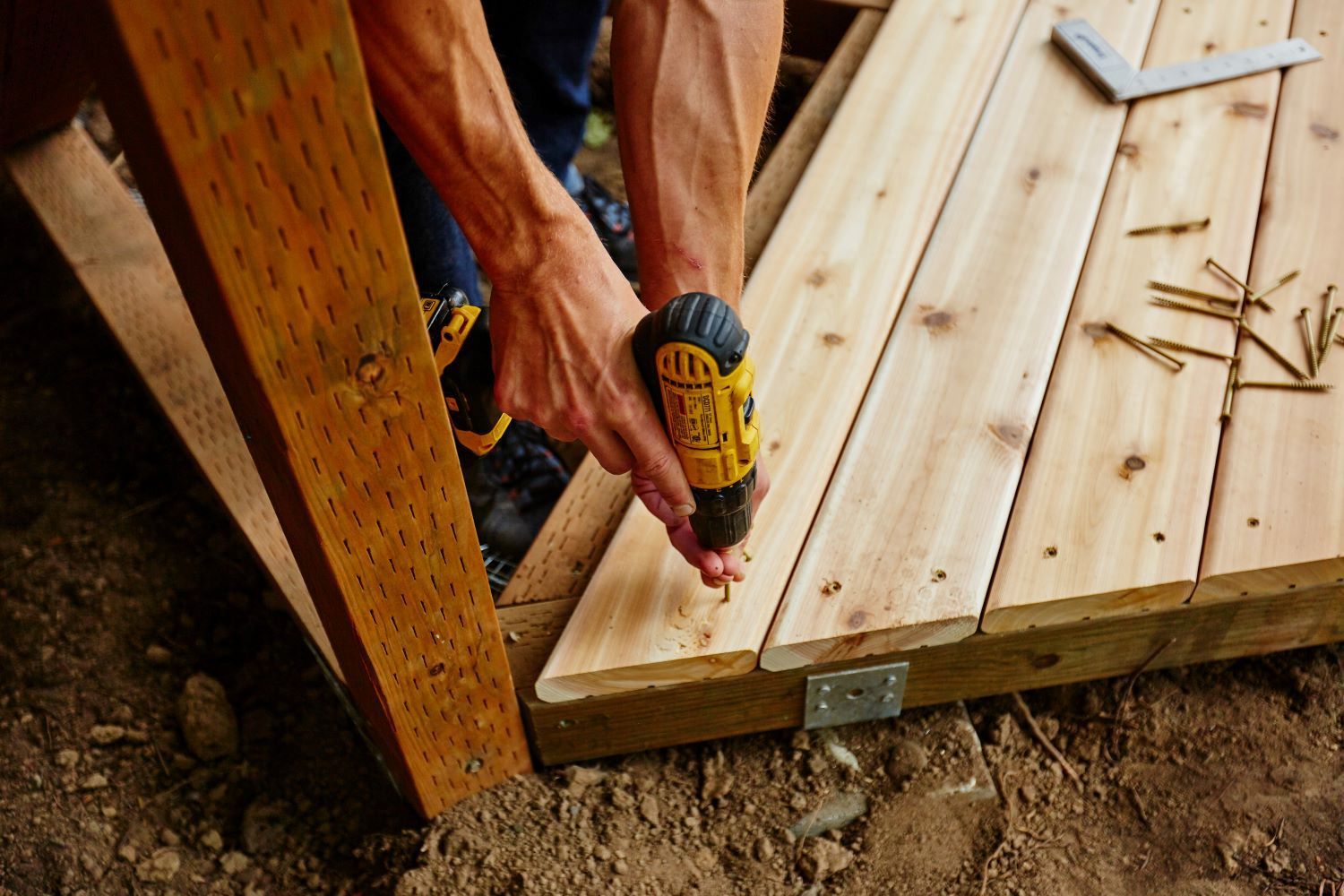
Keeping your deck in top condition isn’t just about aesthetics; it’s essential for safety and longevity. Over time, decks naturally develop gaps and cracks due to seasonal changes, exposure to weather, and normal wear and tear. Left untreated, these cracks can lead to moisture damage, wood rot, and structural weakness. Here, we’ll guide you through the process of filling gaps and sealing cracks in your deck to protect your outdoor space, improve its appearance, and enhance its durability. Why Gaps and Cracks Occur in Decking Understanding why gaps and cracks form in your deck is essential to choosing the right repair solutions . Here are a few common reasons: Weather Exposure: Extreme temperatures cause wood to expand and contract, leading to cracks and gaps. Moisture: Water penetrates the wood, leading to swelling, warping, and eventual cracks when it dries. Aging Wood: Over time, wood fibers lose their strength, making cracks and gaps more likely. Improper Installation: Incorrect spacing or installation methods can lead to premature gaps. Now that we understand why they happen, let’s explore how to repair these imperfections. Step-by-Step Guide to Filling Gaps and Sealing Cracks in Your Deck 1. Gather Your Materials For a successful repair, you’ll need a few basic materials: Deck cleaner or pressure washer Putty knife or a small trowel Sandpaper or sanding block Wood filler or wood putty Deck sealer or wood sealant Paintbrush or roller 2. Prepare the Surface Start by thoroughly cleaning your deck. Remove dirt, mildew, and debris that may have settled in the cracks and gaps. You can use a deck cleaner or a pressure washer for this step. Ensuring the deck is clean allows the filler to adhere more effectively and the sealer to penetrate the wood. 3. Sand the Affected Area Once your deck is dry, use sandpaper or a sanding block to smooth the edges of the gaps and cracks. Sanding helps remove splinters and rough areas, creating a surface that better accepts the filler and makes it easier to blend with the surrounding wood. 4. Choose the Right Filler for Your Deck Selecting a quality wood filler or wood putty is crucial for filling gaps. Look for products designed for outdoor use, as they’ll be more resistant to weathering. Some options include: Epoxy wood filler: Durable and weather-resistant, ideal for larger cracks and deep gaps. Acrylic latex caulk: Flexible and waterproof, perfect for smaller gaps between deck boards. Wood putty: Good for surface-level cracks; choose a putty that matches your deck’s color for a seamless look. 5. Apply the Filler to Cracks and Gaps Using a putty knife or trowel, apply the filler directly into the cracks and gaps, pressing it in as much as possible. Smooth the surface with your putty knife to make it level with the deck boards. Be sure to overfill slightly, as some fillers shrink when drying. Allow the filler to dry completely, according to the manufacturer’s instructions. Drying times may vary, so check the label for specifics. 6. Sand and Smooth the Repaired Areas Once the filler is dry, sand the repaired area to smooth it out and blend it with the surrounding wood. This step is crucial for a seamless finish, especially if you plan on staining or painting the deck afterward. 7. Seal the Deck to Protect Against Moisture After filling gaps and cracks, it’s essential to seal the deck. A good sealant will protect your repairs, prevent future cracks, and safeguard the deck from moisture damage. Use a paintbrush or roller to apply a waterproof sealant evenly across the entire deck surface, paying extra attention to the repaired areas. 8. Reapply Sealant Regularly Even with quality filler and sealant, decks need regular maintenance to stay in good shape. Reapply sealant every two to three years, or more frequently if your deck is heavily exposed to sunlight and rain. Tips for Preventing Future Gaps and Cracks Clean Your Deck Regularly: Regular cleaning removes debris and moisture-trapping dirt, reducing the chance of water damage. Inspect Annually: Make it a habit to inspect your deck for gaps, cracks, and other issues at least once a year. Seal Your Deck Consistently: A consistent sealing routine can prevent cracks and maintain the deck’s durability. Choose the Right Materials: Pressure-treated wood or composite decking may resist cracking better than untreated wood. When to Call a Professional While small cracks and gaps can be DIY-friendly, larger structural issues may require a professional’s expertise. If you notice severe splitting, rotten wood, or widespread damage, it’s best to contact a deck repair professional. For residents in London, Ontario, Deck and Fence London can offer expert assistance and ensure your deck repairs are handled with quality craftsmanship. Final Thoughts Regular maintenance and timely repairs can extend the life of your deck and keep it looking fantastic. Filling gaps and sealing cracks is a straightforward process that, when done correctly, can prevent costly repairs down the road. With just a little effort and a few materials, you can enjoy a beautiful, safe, and long-lasting deck for years to come. If you have any questions about deck repairs or need a professional hand, Deck and Fence London is here to help. Our team specializes in deck repair and maintenance for London, Ontario, ensuring your deck stays in peak condition all year round.

Decks are a wonderful addition to any home, offering a space to relax, entertain, and enjoy the outdoors. However, the type of material you choose for your deck will significantly influence its maintenance requirements and longevity. At Deck and Fence London , we understand that knowing how to care for your deck can enhance its lifespan and appearance. In this article, we’ll explore various deck materials and their unique maintenance needs . 1. Pressure-Treated Wood Maintenance Needs: Pressure-treated wood is a popular choice for decks due to its affordability and durability. However, it requires regular maintenance to prevent rot and insect damage. Cleaning: Clean your deck at least once a year with a wood cleaner and a power washer to remove dirt, mold, and mildew. Sealing/Staining: Apply a sealant or stain every two to three years to protect against moisture and UV damage. This will also enhance the wood’s natural beauty. Tips: Inspect the deck regularly for signs of wear or damage, especially in high-traffic areas. Use a UV-resistant sealant to extend the lifespan of your finish. 2. Composite Decking Maintenance Needs: Composite decking is made from a blend of wood fibers and plastic, offering the look of wood without the high maintenance. It's resistant to rot and insect damage, but it still requires some upkeep. Cleaning: Composite decks should be cleaned with soap and water or a composite deck cleaner once or twice a year. Avoid using a power washer, as it can damage the surface. Stain Removal: If spills occur, clean them immediately to avoid stains. Composite materials are less prone to staining than wood, but they still need attention. Tips: Sweep your composite deck regularly to prevent debris buildup. Use furniture pads and coasters to avoid scratching the surface. 3. Cedar and Redwood Maintenance Needs: Cedar and redwood are naturally resistant to rot and insects, making them excellent choices for decks. However, they still require regular care to maintain their appearance and structural integrity. Cleaning: Similar to pressure-treated wood, these materials should be cleaned annually with a gentle soap solution and a scrub brush. Sealing/Staining: To preserve their rich colors, apply a high-quality wood sealer or stain every two years. Tips: Inspect for cracks and splintering, especially at the ends of boards, and sand any rough spots to prevent injuries. Consider using a tinted sealer to enhance the natural beauty of the wood. 4. Aluminum Decking Maintenance Needs: Aluminum decking is incredibly durable and requires minimal maintenance. It is resistant to rust, rot, and insects. Cleaning: Simply wash your aluminum deck with soap and water as needed, typically once a year. Inspecting: While it doesn’t require sealing, it’s wise to check for any loose fasteners or signs of wear. Tips: Avoid using harsh chemicals or abrasive cleaners that could scratch the surface. If your deck is powder-coated, ensure to touch up any scratches to prevent corrosion. 5. Vinyl Decking Maintenance Needs: Vinyl decking offers a stylish and low-maintenance solution. It is resistant to mold, mildew, and fading. Cleaning: Regularly sweep off debris and wash the surface with soap and water. Vinyl decks may require a thorough cleaning every couple of years with a soft brush. Inspecting: Check for signs of fading or wear and replace damaged boards as necessary. Tips: Avoid placing hot items directly on vinyl surfaces to prevent warping or melting. Use a soft cloth to remove any stains promptly to maintain the deck’s appearance. Conclusion Understanding the specific maintenance needs of your deck material is crucial for its longevity and overall appearance. Regular cleaning, sealing, and inspections will help protect your investment and ensure your outdoor space remains beautiful for years to come. At Deck and Fence London , we are here to help you with all your deck maintenance needs. Whether you need advice on choosing the right materials, assistance with installation, or maintenance services, our experienced team is ready to assist you. Contact us today to learn more about how we can help you keep your deck in excellent condition!
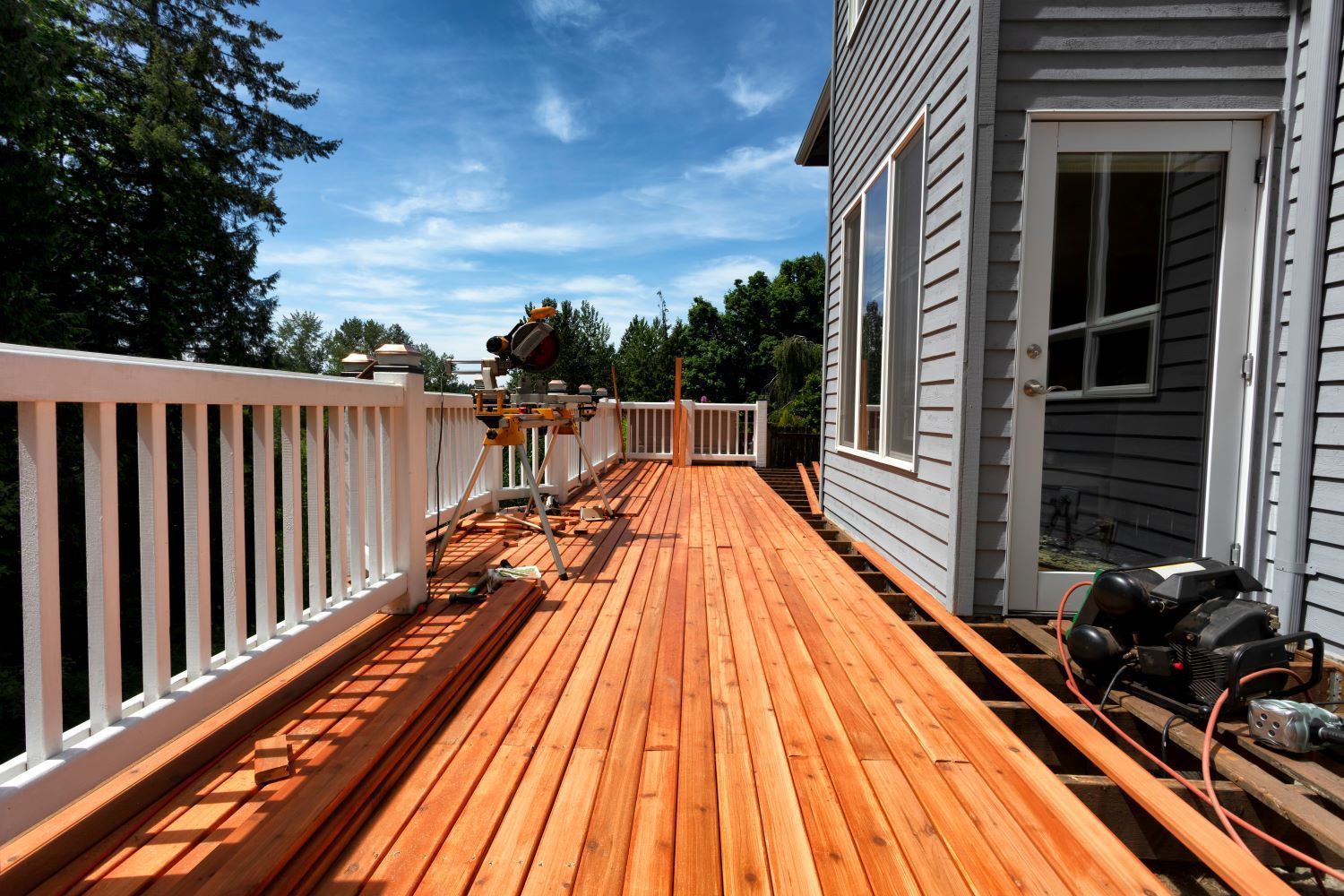
When it comes to building a beautiful and durable deck, every detail counts—including the fasteners you choose. While often overlooked, the right deck fasteners can make a significant difference in the overall aesthetics and longevity of your outdoor space. In this article, we'll explore the types of deck fasteners available, their benefits, and how to select the right ones for a sleek finish that complements your deck's design . Types of Deck Fasteners There are several types of fasteners commonly used in deck construction, each with its unique characteristics: 1. Screws Deck screws are specifically designed for securing decking boards to the framing. They provide excellent holding power and are less likely to strip compared to traditional nails. Advantages: Screws offer superior grip, reducing the risk of boards loosening over time. Many deck screws come with a corrosion-resistant coating, making them ideal for outdoor use. Disadvantages: Installation requires pre-drilling holes to avoid splitting, particularly in hardwoods. 2. Nails Nails are another common option for deck construction. They can be used for both framing and attaching decking boards. Advantages: Nails are generally quicker to install and can be less expensive than screws. They allow for some movement, which can be beneficial in certain climates. Disadvantages: Nails may not provide as strong of a hold as screws, leading to potential loosening over time. They are also more prone to corrosion if not treated properly. 3. Hidden Fasteners Hidden fasteners, such as clips or brackets, are designed to secure the decking without visible screws or nails on the surface. This results in a clean, seamless look. Advantages: Hidden fasteners enhance the visual appeal of your deck by eliminating surface fasteners. They also help prevent moisture from collecting on screw heads, reducing the risk of rust. Disadvantages: Installation can be more complex and may require specific tools. They may also be more expensive than traditional fasteners. 4. Composite Fasteners If you're using composite decking materials, composite fasteners are specifically designed for this type of product. These fasteners are usually made from materials that match or complement the composite boards. Advantages: They are designed to expand and contract with the composite material, reducing the risk of warping or cracking. Composite fasteners also maintain the sleek appearance of the deck. Disadvantages: Availability and cost can vary, so it's essential to source them from reputable suppliers. Factors to Consider When Choosing Fasteners When selecting the right fasteners for your deck, consider the following factors: 1. Material Compatibility Ensure that the fasteners are compatible with the materials you are using for your deck. For example, if you're using treated wood or composite decking, choose fasteners specifically designed for those materials. 2. Corrosion Resistance Outdoor decks are exposed to various weather conditions, so choosing fasteners with high corrosion resistance is crucial. Look for materials like stainless steel or coated screws that can withstand moisture and prevent rust. 3. Aesthetics Fasteners can affect the visual appeal of your deck. If you prefer a seamless look, consider hidden fasteners. For a more traditional appearance, choose screws or nails that complement your decking color. 4. Installation Ease Consider your skill level and the tools available to you. Some fasteners require specialized tools or more advanced installation techniques, which may impact your choice. 5. Budget While it's essential to invest in quality fasteners, consider your overall budget. Sometimes, spending a bit more on fasteners can lead to long-term savings through reduced maintenance and repairs. Conclusion Choosing the right deck fasteners is a crucial step in ensuring your deck not only looks great but also stands the test of time. At Deck and Fence London , we understand the importance of quality materials and expert craftsmanship. Whether you prefer screws, nails, hidden fasteners, or composite options, selecting the appropriate fasteners will enhance the overall finish and durability of your deck. If you're ready to build or renovate your deck, contact us today! Our experienced team is here to guide you through the process and help you create the perfect outdoor space for relaxation and entertainment.
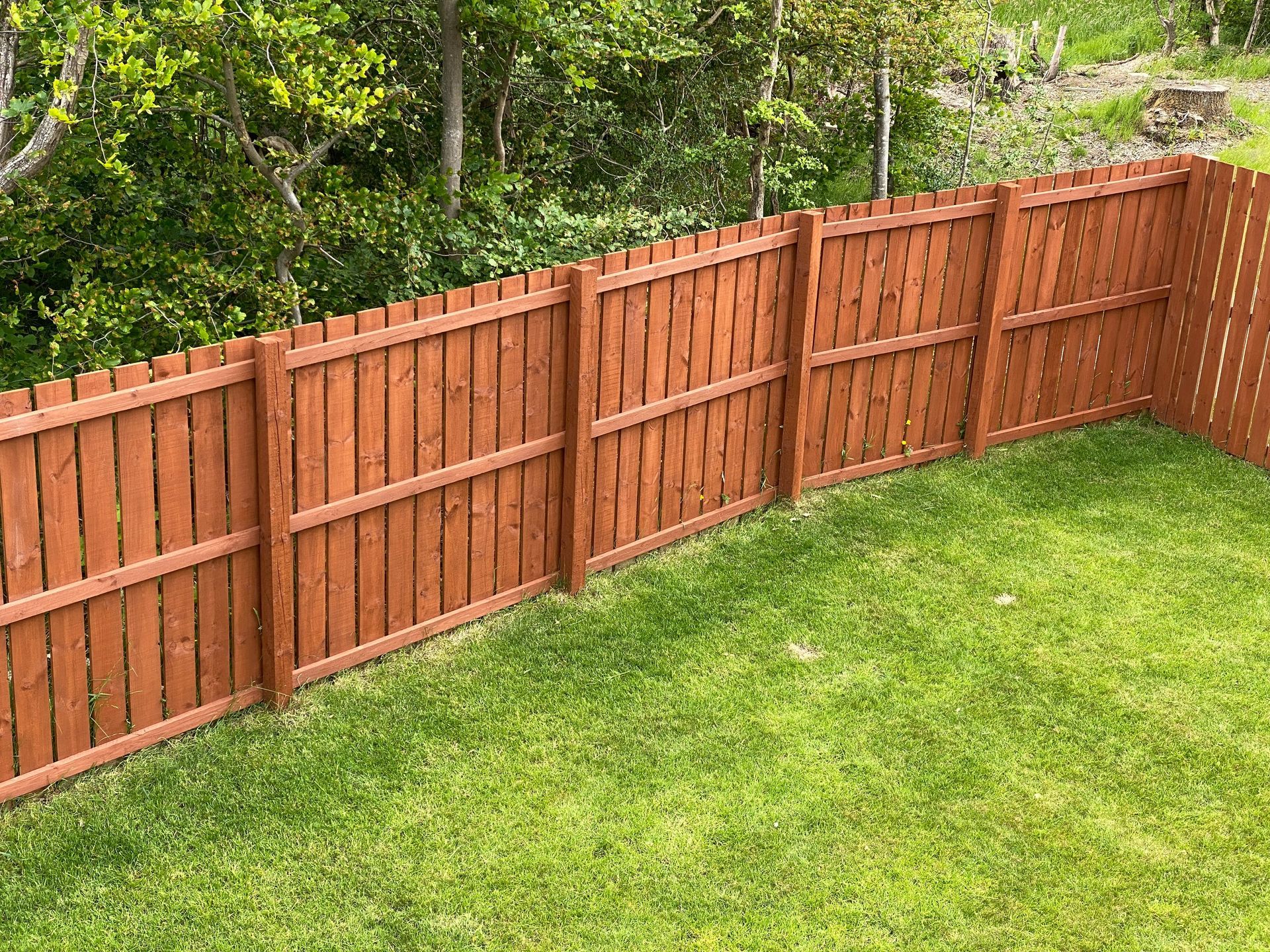
Wooden fences are a charming and functional addition to many homes in London, Ontario. However, over time, even the most well-built fences can suffer damage, especially wooden fence posts. A split or broken post can compromise the entire structure of your fence, leading to sagging, leaning, or even collapse. Fortunately, with the right approach, you can repair a damaged post and restore the integrity of your fence. In this guide, we’ll walk you through the steps for repairing a split or broken wooden fence post . Why Do Wooden Fence Posts Split? Before diving into the repair process, it’s important to understand why wooden fence posts might split in the first place. The most common reasons include: Weather Exposure: Rain, snow, and fluctuating temperatures cause wood to expand and contract, leading to cracks or splits. Rotting: Over time, moisture can cause the wood to decay, especially at the base where the post meets the ground. Insect Damage: Termites or other pests can weaken the wood structure, making it prone to splitting. Physical Damage: Impact from vehicles, heavy objects, or animals can cause posts to break or crack. Knowing the cause of the split will help prevent future damage and guide you in selecting the right materials for repair. Tools and Materials You’ll Need To repair a split or broken fence post, gather the following tools and materials: Replacement post (if the original is beyond repair) Post hole digger or shovel Gravel for drainage Concrete mix for securing the post Hammer or sledgehammer Galvanized nails or screws Level Wood glue or epoxy (for minor splits) Wooden stakes and rope (for support) Step-by-Step Guide to Repairing a Split or Broken Fence Post 1. Evaluate the Damage Start by inspecting the fence post to determine if it can be repaired or if it needs to be replaced entirely. If the post is split but still structurally sound, it can often be repaired with wood glue or epoxy. However, if the post is rotted or severely damaged, replacement is the best option. 2. Remove the Damaged Post (If Necessary) If the post needs to be replaced, you’ll have to remove it from the ground. Use a shovel or post hole digger to loosen the soil around the base of the post. Once the soil is loose, carefully pull the post out of the hole. If it’s set in concrete, you may need to break up the old concrete before removing the post. 3. Prepare the New Post or Repair the Split For minor splits: If the damage is minor, use wood glue or epoxy to bond the split back together. Apply the adhesive into the crack, then clamp the post or secure it with screws to hold the split closed until the glue sets. This method works well for smaller splits where the integrity of the post is still intact. For a replacement post: If the post needs to be replaced, measure the length of the old post and cut a new one to match. Make sure to treat the new post with a wood preservative to protect against future rot. 4. Dig a New Hole (If Necessary) Once the damaged post is removed, dig a new hole that’s at least 1/3 the height of the post to ensure stability. If you’re replacing a post in the same spot, make sure the hole is deep enough and clear of any old debris. 5. Install the New or Repaired Post Place the new or repaired post into the hole. Add a layer of gravel at the bottom to improve drainage and prevent water from pooling around the base, which can cause rot. Use a level to make sure the post is standing straight. Fill the hole with concrete or tightly packed soil to secure the post in place. If using concrete, allow it to set according to the manufacturer's instructions before proceeding. 6. Brace the Post for Stability To keep the post upright while the concrete sets, use wooden stakes and rope to brace the post. Drive the stakes into the ground on either side of the post, and tie the rope around the stakes and post to hold it in place. 7. Reattach the Fence Panels Once the post is secure and the concrete has set, reattach the fence panels to the post using galvanized nails or screws. Make sure everything is level and aligned with the rest of the fence. Tips for Preventing Future Damage Regular Inspection: Regularly inspect your fence for signs of wear, rot, or damage. Catching issues early can prevent costly repairs down the line. Seal and Treat the Wood: Use a wood preservative or sealant to protect the posts from moisture and insects. Good Drainage: Ensure proper drainage around the base of the post by adding gravel or sand to the bottom of the hole. When to Call a Professional While DIY fence repair is possible, some situations call for professional assistance. If your fence has multiple damaged posts, or if you’re unsure about removing and replacing posts on your own, a professional fencing contractor can ensure the job is done right. At Deck and Fence London, we specialize in fence repairs and replacements, ensuring your fence stays strong, attractive, and secure for years to come. By following these steps, you can effectively repair a split or broken wooden fence post and extend the life of your fence. Whether you're dealing with minor splits or major damage, taking the time to properly repair and maintain your fence will protect your investment and enhance the look of your property.

Fences have long been an essential part of homeownership, serving practical and aesthetic purposes. One of their most important roles is defining property boundaries, which helps to clarify ownership and create a sense of personal space. For homeowners in London, Ontario, understanding the importance of fences in marking these boundaries can prevent future disputes and ensure a harmonious relationship with neighbors. In this blog, we’ll explore how fences play a crucial role in defining property lines and how Deck and Fence London can help you choose the perfect fence for your needs. 1. Clearly Marking Property Lines The primary role of a fence is to establish where your property begins and ends. This is particularly important in suburban areas where houses are close together, and shared spaces can lead to confusion. A well-placed fence eliminates ambiguity, making it clear which land belongs to you and which to your neighbors. This not only protects your property but also helps to avoid disputes about encroachment or trespassing. Before installing a fence, it’s essential to know the exact boundaries of your property. Surveying the land or reviewing your property deed ensures you’re building the fence in the right location. Misplacing a fence even by a few inches can lead to legal complications and costly adjustments. 2. Preventing Neighbor Disputes Fences serve as a physical reminder of property limits, reducing the chances of boundary disputes with neighbors. Without a clear line, issues can arise over lawn care responsibilities, garden placement, or even tree growth. A well-constructed fence from Deck and Fence London helps homeowners avoid these problems by creating a clear and agreed-upon division between properties. In London, Ontario, local bylaws often regulate the height, placement, and design of fences, especially those used for property boundaries. It’s crucial to check these regulations to ensure your fence complies with the law, which will further prevent disputes and enhance neighborhood harmony. 3. Enhancing Privacy and Security Beyond marking boundaries, fences provide privacy and security. With a clear division between properties, you can enjoy your backyard or patio without worrying about prying eyes or unintentional intrusion. This is especially beneficial if your home is near a busy road or has neighbors in close proximity. Deck and Fence London offers various fence styles, from solid wood for maximum privacy to ornamental designs that define your space without completely blocking your view. By defining your property boundary, a fence also acts as a deterrent for potential trespassers, enhancing the security of your home. 4. Increasing Property Value Installing a quality fence not only protects your property but can also increase its value. Homebuyers often look for well-maintained, functional fences as a sign of good property care. A fence that defines the boundary, adds privacy, and boosts curb appeal can make your home more attractive in a competitive real estate market. At Deck and Fence London, we work with homeowners to design fences that blend function with aesthetic appeal. Whether you’re looking for a classic wooden fence, a modern vinyl design, or something ornamental, the right fence can increase your home’s market value. 5. Fences and Shared Spaces In some cases, neighbors may want to share the cost of a boundary fence. This is common in London, Ontario, especially when properties share driveways or have large adjoining yards. If you and your neighbor agree on the fence placement and style, it can be a mutually beneficial investment. However, clear communication and written agreements are important to avoid future misunderstandings. Final Thoughts Fences play a vital role in marking property boundaries, preventing disputes, enhancing privacy, and increasing property value. If you’re considering installing or replacing a fence, it’s important to work with a trusted company like Deck and Fence London to ensure the job is done right. From selecting the perfect style to complying with local regulations, we can help you navigate the entire process, ensuring your new fence serves its purpose effectively. A well-placed, quality fence will not only protect your property but also enhance its beauty for years to come.

